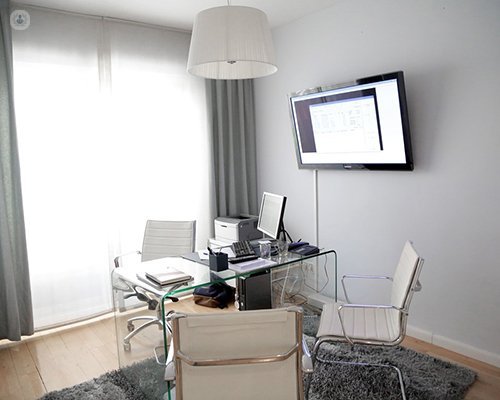Treatment of bone infection
Written by:Osteitis is a bone infection caused by bacteria or other germs. Musculoskeletal infection is one of the most serious complications in Traumatology and Orthopaedic Surgery . It is frequently associated with:
- Shortening tip: origin of inequality in length between limbs.
- Malunion: bone angular or rotational deformation.
- Nonunion: no fracture healing.
- Segmental bone defects: permanent loss of a few centimeters of diaphyseal bone.
- Chronic osteitis: persistent problem over the years.
- Fistulation: Cutaneous hole from the focus of bone infection through which liquid injury and occasionally releases pus.
An open in any degree fracture or surgery on the skeleton can lead to any of the situations described above. The presence of implants (artificial joints, screws, plates or intramedullary nails) especially complicates treatment of bone infection process by acting as a foreign body. The implant facilitates the adhesion of germs and extremely difficult to treat the infection.
Complications of osteomyelitis
The existence of osteomyelitis, ie any acute bone infection, can result in a chronic osteitis. There are experts who claim that "chronic osteitis is like a time bomb could explode at any time". To this they may have contributed insufficient surgical methods that do not include in their design the modern concepts of the pathophysiology of bone infection, mainly in relation to the formation of biofilms surgical techniques and segmental resection calls with tumor criteria.

How osteomyelitis occurs
When a germ sticks or colonizes a wound, the infection process begins. Once the germ is attached on few vital tissues, or necrotic bone implants, germ begins to multiply and produce a mucous substance (slime-mucus) with which is coated. Within this mucus, continues its multiplication. Mucosal substance itself insulates the patient germs and antibiotics supplied for treatment immune system (defenses).
Osteomyelitis: Treatment
The term of osteomyelitis should be reserved for acute bone infection or bone infection that is transmitted through the blood at any age. When proper medical treatment fails osteomyelitis, we call it chronic osteitis. In cases of chronic osteitis surgery to remove physically expel areas where biofilm has occurred is required; either implants, bone or necrotic tissue viability doubtful. Under these conditions, they can finish the job specific antibiotics against previously identified germs.
When conventional surgical methods fail, there are some years some aggressive surgical treatment methods that lead to the eradication of infection in percentages close to 100%. It consists of a first surgical treatment of removal of all those desvascularizadas structures (implant, bone and tissue) on which the biofilm persist. For such treatment to be successful, you must obey criteria tumor surgery.
Once controlled and eradicated infectious focus, you must rebuild the bone defect generated segmental resection surgery of the infectious focus. It is here where modern techniques specifically skeletal reconstruction and long bone (diaphyseal) come into play.
Reconstruction of bone defects by osteomyelitis
The technique chosen for the reconstruction of bone defects segmental long bone is bone transportation based osteogenesis distraction. This technique is based on successes in Eastern Europe by Professor G. Ilizarov. It is based on a technique similar to the limb lengthening. Seven to ten days after making a transverse osteotomy, ie, physically cutting the bone, they begin to separate bone ends cut by an external fixation device. This process is causing the formation of a reparative callus in a "regenerated bone" extraordinary physiological and morphological characteristics, to complete the formation of a "living" bone in continuity with the patient 's bone.
This reconstruction technique osteomyelitis bone defects has some benefits:
- Hypervascularity of the entire object treatment tip
- Getting a new bone with similar characteristics to the patient
- Dismetrías correction and angular limb deformities
- Transportation transported by the soft bone parts, which facilitates the combined treatment, bone and soft tissue segmental defects
- Normally bone substitutes or bone bank grafts are not needed
Edited by Noelia García Pino


